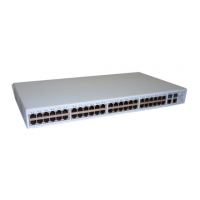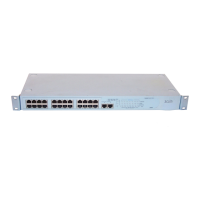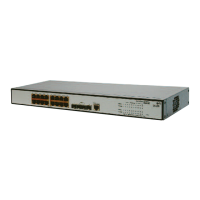GLOSSARY 71
standard way for VLANs to communicate across
switched networks.
IEEE 802.1p
An IEEE standard for providing quality of service (QoS)
in Ethernet networks. The standard uses packet tags
that define up to eight traffic classes and allows
switches to transmit packets based on the tagged pri
-
ority value.
IEEE 802.3ad
A standard that defines link aggregation. 802.3ad is
now incorporated into the relevant sections of the
IEEE Std. 802.3-2002.
IETF
Internet Engineering Task Force. An organization
responsible for providing engineering solutions for
TCP/IP networks. In the network management area,
this group is responsible for the development of the
SNMP protocol.
IP
Internet Protocol. IP is a layer 3 network protocol that
is the standard for sending data through a network.
IP is part of the TCP/IP set of protocols that describe
the routing of packets to addressed devices. An IP
address consists of 32 bits divided into two or three
fields: a network number and a host number or a net
-
work number, a subnet number, and a host number.
IP Address
Internet Protocol Address. A unique identifier for a
device attached to a network using TCP/IP. The
address is written as four octets separated with peri
-
ods (full-stops), and is made up of a network section,
an optional subnet section and a host section.
LAN
Local Area Network. A network of end stations (such
as PCs, printers, servers) and network devices (hubs
and switches) that cover a relatively small geographic
area (usually not larger than a floor or building). LANs
are characterized by high transmission speeds over
short distances (up to 1000 meters).
Layer 2
Data Link layer in the ISO 7-Layer Data Communica-
tions Protocol. This is related directly to the hardware
interface for the network devices and passes on traf
-
fic based on MAC addresses.
link aggregation
See Trunking.
MAC
Media Access Control. A protocol specified by the
IEEE for determining which devices have access to a
network at any one time.
MAC address
Media Access Control Address. Also called the hard-
ware, physical, or Ethernet address. A layer 2 address
associated with a particular network device. Most
devices that connect to a LAN have a MAC address
assigned to them as they are used to identify other
devices in a network. MAC addresses are 6 bytes
long.

